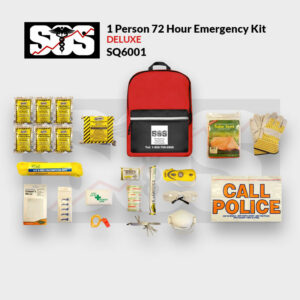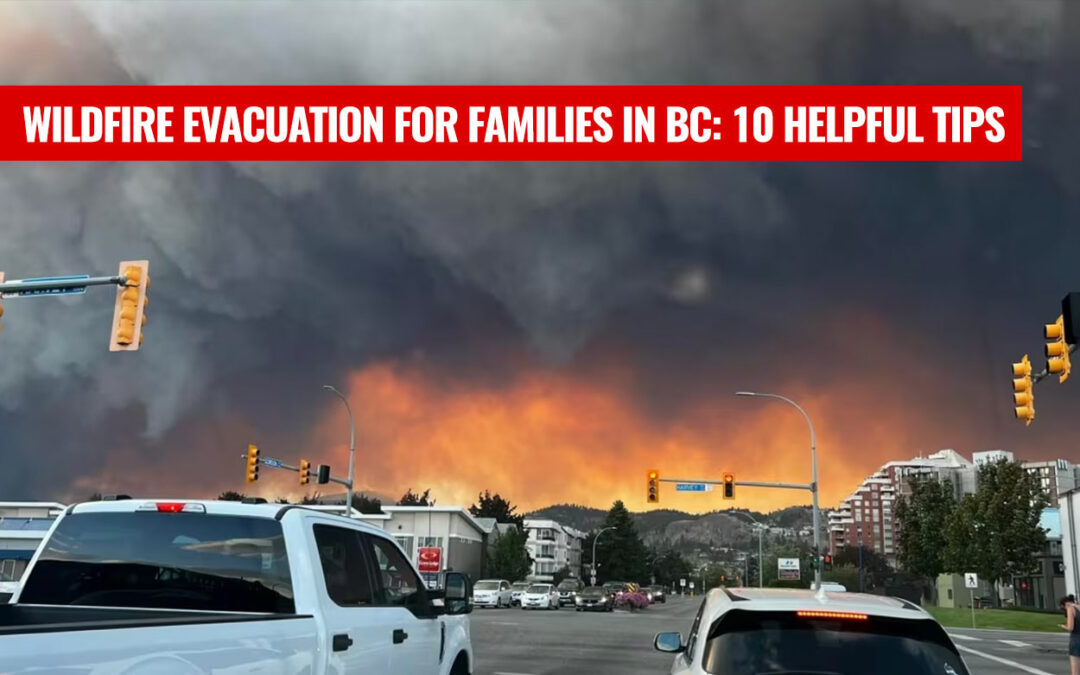Wildfire Evacuation for Families in BC: 10 Helpful Tips
1. Know the Risk
It’s crucial for us to stay alert and informed. Just like checking the weather before a day out, make it a routine to keep an eye on local news broadcasts, radio stations, and trusted online platforms. The BC Wildfire Service is an excellent resource, providing real-time updates and safety guidelines tailored for our community. By staying informed, we can better prepare, protect our homes, and ensure the safety of our families. Monitor local news and official sources like BC Wildfire Service for updates on wildfire evacuation.
2. Prepare a Wildfire Evacuation Plan
Every family should have a well-rehearsed evacuation plan. Here’s how you can start:
- Identify two escape routes from your home and neighbourhood.
- Choose a safe meeting place outside your community where family members can regroup.
- Consider the needs of elderly family members, children, and pets.
- Keep a list of emergency contacts and essential services.
 3. Create an Emergency Kit
3. Create an Emergency Kit
Here’s how you can start:
Having a kit ready can make all the difference. Your kit should include:
- Three days’ worth of water and non-perishable food items.
- Medications, prescriptions, and essential toiletries.
- Copies of vital documents in a waterproof bag (ID, insurance, bank details).
- A battery-powered radio, flashlight, and extra batteries.
- First aid supplies.
- Clothing suitable for the weather and sturdy shoes.
- Cash in small denominations.
4. First Aid Training Tips
Wildfire evacuation situations can lead to injuries. Here’s a quick primer on first aid essentials:
- Cuts and Scratches: Clean the wound with clean water and apply an antiseptic ointment. Use a sterile bandage to cover it.
- Burns: Hold the burned area under cool running water for at least 10 minutes. Don’t use ice. Cover loosely with a sterile bandage.
- Smoke Inhalation: Move the person to fresh air. Encourage them to take slow, deep breaths. Seek medical attention if they have difficulty breathing or show signs of confusion.
- Always: Keep a first aid manual in your kit and consider attending a first aid training course. Knowledge is power!
5. Car Safety and Preparedness
During a wildfire evacuation. if you’re evacuating by car, ensure:
- Your gas tank is at least half full at all times during fire season.
- You have maps (digital and physical) to navigate around potential road closures.
- The car contains emergency supplies, like blankets, water, non-perishable snacks, and a first aid kit.
6. Pets and Livestock during a Wildfire Evacuation
Our furry family members need care too!
- Have a plan for where you’ll take your pets if you need to evacuate.
- Ensure all pets have ID tags.
- Keep a pet emergency kit, including food, water, leashes, carriers, and any medications.
7. Wildfire Evacuation: Stay Informed
During wildfire season:
- Regularly check updates from official sources.
- Sign up for community alerts.
- Check the BC Wildfire Map: HERE
- Stay connected with neighbours and community members. There’s strength in unity!
8. When to Evacuate
If a wildfire evacuation order is issued, leave immediately.
But even before an official order:
- If you feel your route may become compromised soon, it’s better to leave early.
- If you have respiratory issues or if there are vulnerable members in your household, consider evacuating sooner.
In British Columbia, it is imperative for residents to be aware that wildfire evacuation emergency alerts are disseminated through TV, radio, and cell phones. These broadcasts are designed to convey critical public safety information during events that pose imminent threats to life.
More info on BC Emergency Alerts
9. After Evacuation
Once evacuated:
- Register with local emergency services, even if you’re not seeking shelter. This helps in accounting for everyone.
- After a wildfire evacuation, stay away until an official “all clear” is given. The danger may not be visible, but it’s there.
10. Continue the Preparedness Journey
Emergency preparedness isn’t a one-time task. It’s a continuous process.
- Review and practice your plans regularly.
- Refresh your emergency kit every six months.
- Stay updated with the latest recommendations.

